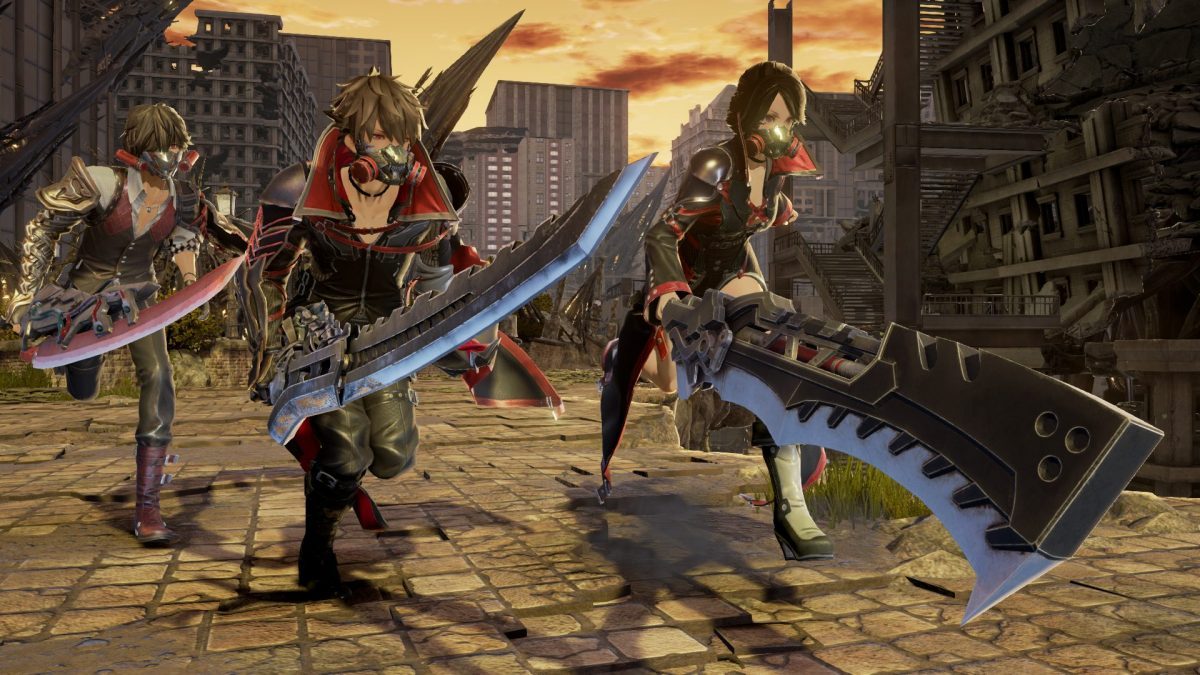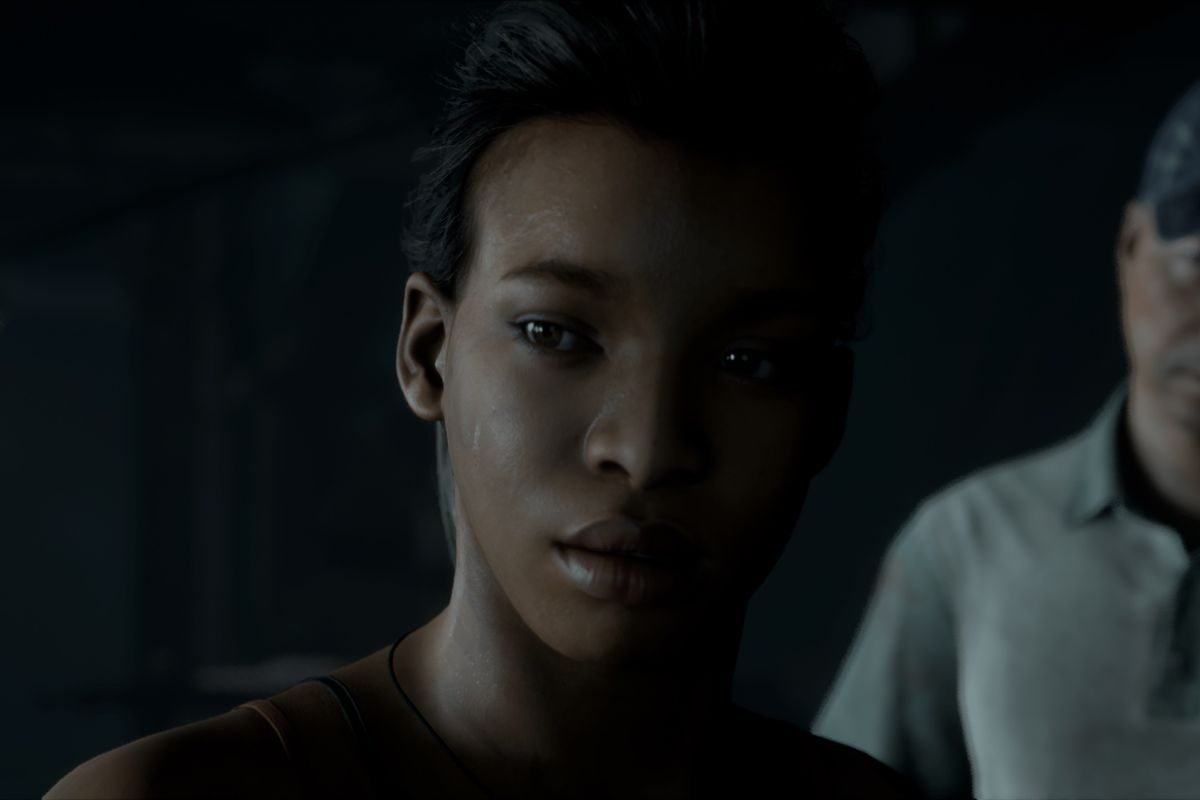If you’re a fan of video games and live in America, then you know all about E3, aka Christmas For Gamers. Happening once a year during June in Los Angeles, California, E3 is a massive trade-show where the biggest video game companies announce their biggest new games. Surprise sequels, brand new IPs, unexpected remakes, and more flow out of the Los Angeles Convention Center this time every year. If you’re a member of the games industry, a game journalist, or a gamer with hundreds of dollars to spare, you can go to E3 in-person and play plenty of these upcoming releases yourself. I was at E3 this year checking out a number of games and companies, and one place I made sure to make time for was Japanese favorite Bandai Namco. They showed off a lot of great stuff at E3 this year, and I was lucky enough to get hands-on time with most of their line-up.
The first game I demoed was Code Vein. This most recent build of the long-delayed Souls-style game from the God Eater team addressed some of the feedback and concerns from their recent online open test. This game has gone through a lot of changes, though, and I don’t know if all of them are for the better. When Code Vein was first showed off, it had slow and deliberate combat that was easily comparable to Dark Souls or Sekiro. Now, however, combat has become a lot quicker and flashier, with your player character doling out attacks at rapid action-game speeds. Oddly, though, your enemies still slowly telegraph their methodical attacks, leading to an awkward situation where the monsters still act like they’re in a slow Souls game. This allowed me to easily run in and dispatch most enemies with a simple combo, which wasn’t super satisfying.
The boss fight at the end of the demo, though, most definitely was. The enemy grunts throughout the level may not have gotten the memo about combat being faster, but this boss most certainly did. My opponent flashed and dashed around the screen at wild speeds, dishing out quick one-two combos with nasty accompanying ice-blasts that barely gave me an opening to retaliate. This battle was challenging as hell and incredibly rewarding and shows off Code Vein at it’s best. If the full game can deliver more experiences like this, I’m sure it’ll be worth playing.
I then hopped into a demo for Dragon Ball Z Kakarot, which was a little less promising. The very first teaser for this game excited me immensely, but the newest E3 footage dampened my dreams when the game started looking like just another Dragon Ball Z arena brawler. Unfortunately, my hands-on time only confirmed my suspicions. Combat in this game is like many other recent Dragon Ball releases, and fails to do anything unique with gameplay systems in order to shake things up and feel like more of an RPG. Boss characters like Raditz will sometimes unleash massive, overwhelming barrages of energy that you likely wouldn’t see in any of the standard arena fighters, but that just isn’t enough to make this game feel new.
Overworld exploration isn’t too revolutionary, either. There isn’t a massive open-world full of activities and life to explore. Instead, you’ll float around barren but modestly sized environments like the grasslands of Earth until an encounter or town down below draws your attention. Towns offer a similar level of interactivity to hub rooms from Jump Force, which is to say, not much. If there’s anything positive about this experience, it would have to be the visuals. They’re sharp as hell and match the style of the original manga and anime nearly perfectly. Unfortunately, we’ve had plenty of Dragon Ball games do that. There needs to be a fun game to back up those gorgeous visuals, and as it stands, Dragon Ball Z Kakarot ain’t it.
For long-time Bandai Namco fans who want to revisit an underappreciated classic, Ni no Kuni Remastered is something worth watching. The current-gen re-release of the Ghibli co-produced JRPG epic sports a crisper resolution, sharper textures, and a much smoother framerate. Not much else has changed in this package, and that’s totally fine. The strange but addictive Pokémon-esque hybrid combat remains in-tact, as do the charming British voices and the incredible Joe Hisaishi score. Ni No Kuni: Wrath of the White Witch was an incredibly charming and unique game when it first came out; this remaster is simply icing on the cake.
For something a bit different, I also got a chance to play Dark Pictures Anthology: Man of Medan. This is the latest release from the developers of the PlayStation 4 choose-your-own-adventure horror hit Until Dawn, as well as the less successful but just as interesting follow-up Hidden Agenda. If you’ve played either of those, you know what to expect from Man of Medan. Five young adults are on a boat-cation in foreign waters when they’re taken hostage by a crew of menacing fishermen. From there, you’ll need to make tough choices and quick decisions to try and make it out alive.
I was blown away by the graphical fidelity of the game above all else. Characters are facial scanned and played by real actors, and their realistic features combined with the natural lighting and deep shadows of the game results in an incredibly gorgeous game. The realistic visuals are matched by the performances from the cast. Their acting can sometimes be muddled by the awkward way scenes blend together, but charisma and energy flow out of each of these characters, and you can tell they weren’t phoning it in. There’s a promising scenario at play here in Man of Medan, and if my time with the demo is any indication, it’ll be well worth seeing to the end.
Bandai Namco delivered some highs and some lows at E3 this year. Code Vein and Dragon Ball Z Kakarot had promising ideas, but need a lot of work to be truly remarkable. Ni no Kuni Remastered and Man of Medan, meanwhile, take the “if it ain’t broke, don’t fix it” mentality in stride with wonderful results. There’s still time until these titles see their full release, so who knows what could change between now and then.


















